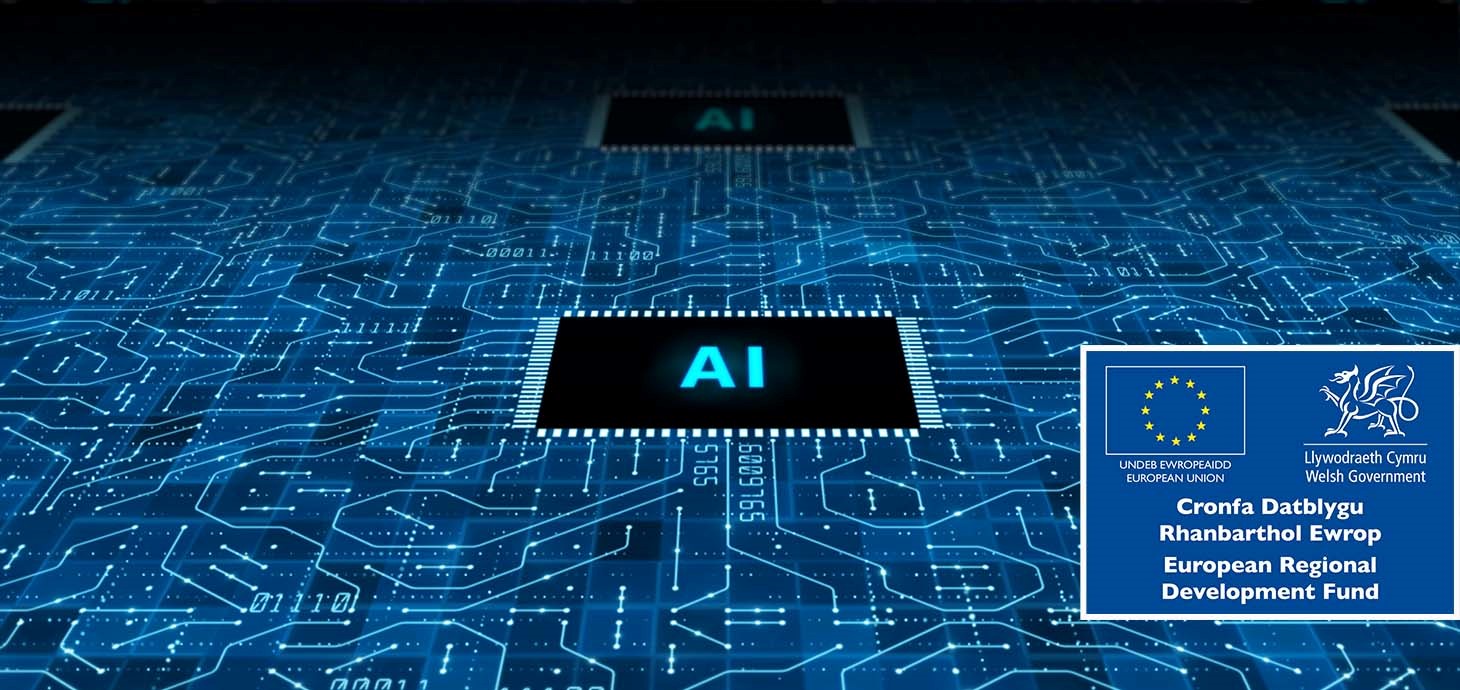
Ser Cymru and AccelerateAl are supported by the European Regional Development Fund through the Welsh Government.
A supercomputer that can perform 15,000 trillion operations per second, making it 15,000 times more powerful than a desktop PC, is to be installed at Swansea University, where it will support research on artificial intelligence (AI) in fields from engineering to medicine.
The supercomputer, built using six BullSequana X410 servers containing 8 NVIDIA A100 accelerators each, will be based at the University’s Bay Data Centre but will be available to researchers and companies across Wales who are working in AI.
Part of the AccelerateAI project, it has been supplied by Atos and funded by the Welsh Government’s Ser Cymru programme. Ser Cymru and AccelerateAl are supported by the European Regional Development Fund through the Welsh Government.
The system will become a crucial research tool for teams investigating the potential of AI, with applications such as:
- analysing patient data for early diagnosis and personalised treatment;
- improving the efficiency of industrial processes, for example in steel manufacturing;
- novel materials, such as nanomaterials and graphene;
- optimisation of power grid systems.
AccelerateAI encompasses research groups in engineering, medicine and science across Wales. The common denominator is that their research is based on advanced machine learning and deep learning algorithms that require the very latest dedicated hardware platforms.
Researchers from other universities within the Supercomputing Wales consortium – including Cardiff, Aberystwyth and Bangor – will have access to the system, helping to support the country’s ambition to compete globally for research and innovation projects.
Professor Biagio Lucini, Principal Investigator, and director of the Swansea Academy of Advanced Computing at Swansea University, said:
“We are pleased that the delivery of this cutting-edge, AI BullSequana X410 supercomputer will empower academics across Wales to drive forward potentially ground-breaking discoveries. Building on the success of the Supercomputing Wales project, this highly innovative equipment will improve how AI is implemented into industry and used to solve research problems, while strengthening Wales’ position as a leading supercomputing hub.”
Professor Lucini’s co-investigators from Swansea University underlined the difference that the supercomputer would make in their fields:
Dr Cinzia Giannetti, Engineering, Industry 4.0/Smart Manufacturing
“This will enable us to significantly reduce the time it takes to develop new algorithms and predictive models for smart manufacturing applications, facilitating the design, development and validation of novel AI-driven frameworks that will help industry to improve the efficiency and sustainability of their production processes.”
Prof. Steve Conlan, Medicine, Genomics
The availability of genomics data continues to grow, through initiatives such as Genomics UK. AI offers a route to exploiting this information in areas including human genomics, pathogen genomics and the emerging area of functional genomics for patient and societal benefit.”
Dr Llion Evans, Engineering, Data-driven Engineering Design
“Using this new system our research will pursue an approach that focuses on data-based outcomes to project backwards how systems and processes should be utilised in order to inform optimal design for applications such as the first-generation fusion energy powerplants in collaboration with UKAEA.”
Dr Francisco Martin-Martinez, Chemistry, chemical reactivity and oxidative processes
“This will enable GPU-accelerated analyses of large chemical structure datasets to find hidden patterns in chemical properties and speed up computational chemistry calculations of the electronic structure of molecules and materials”
Read more about the BullSequana X410, supplied by Atos
Digital Futures - Swansea University research
